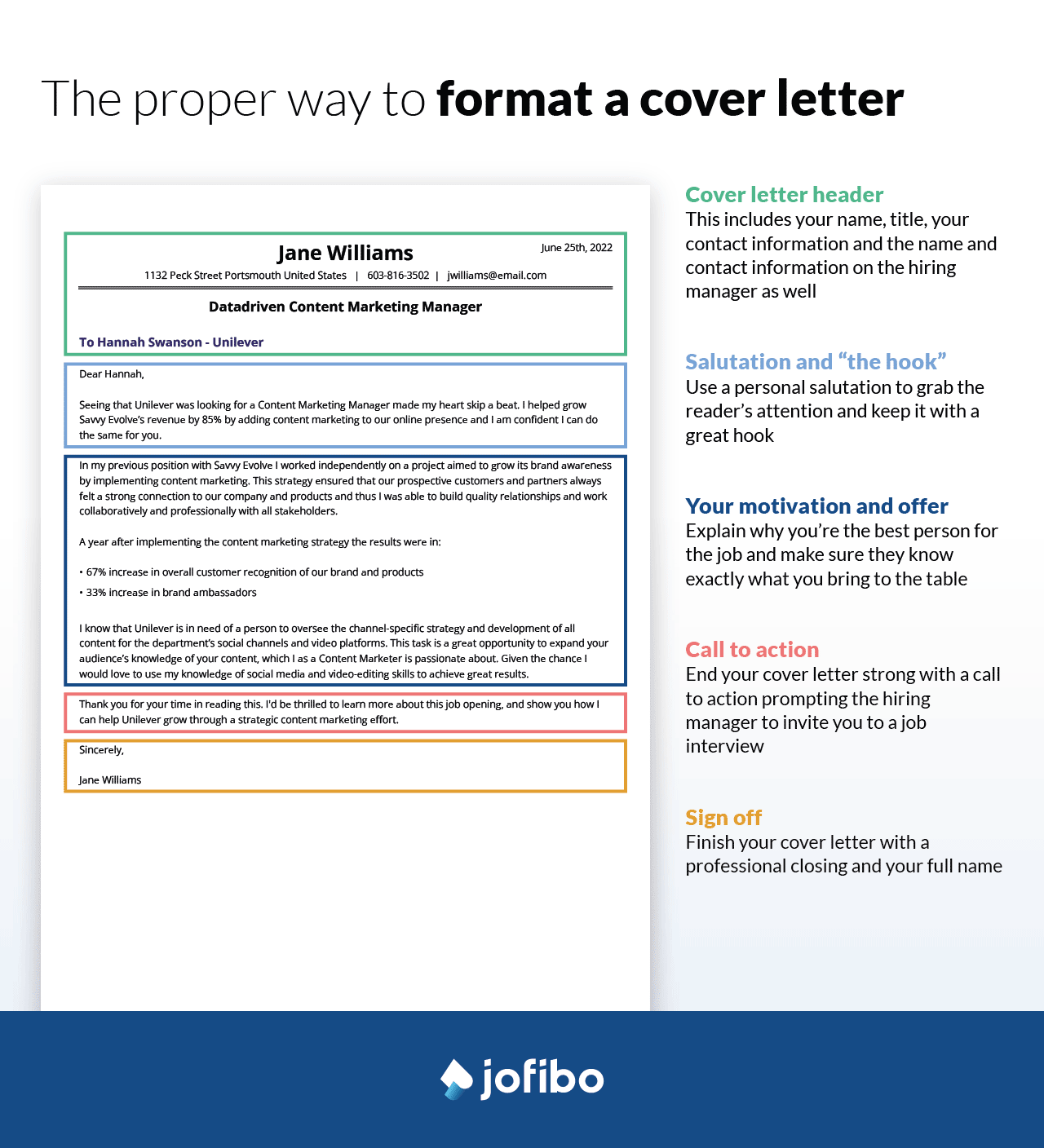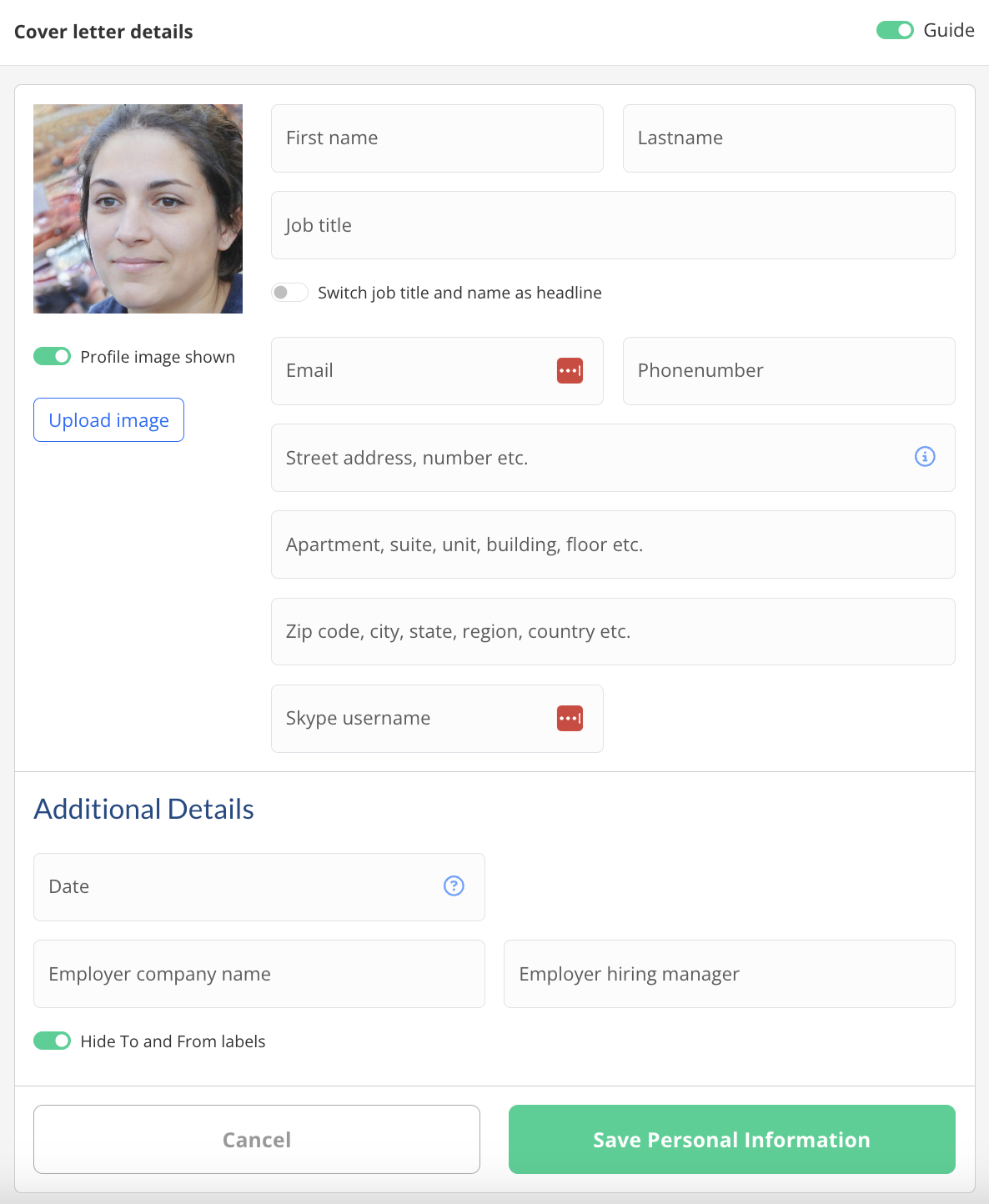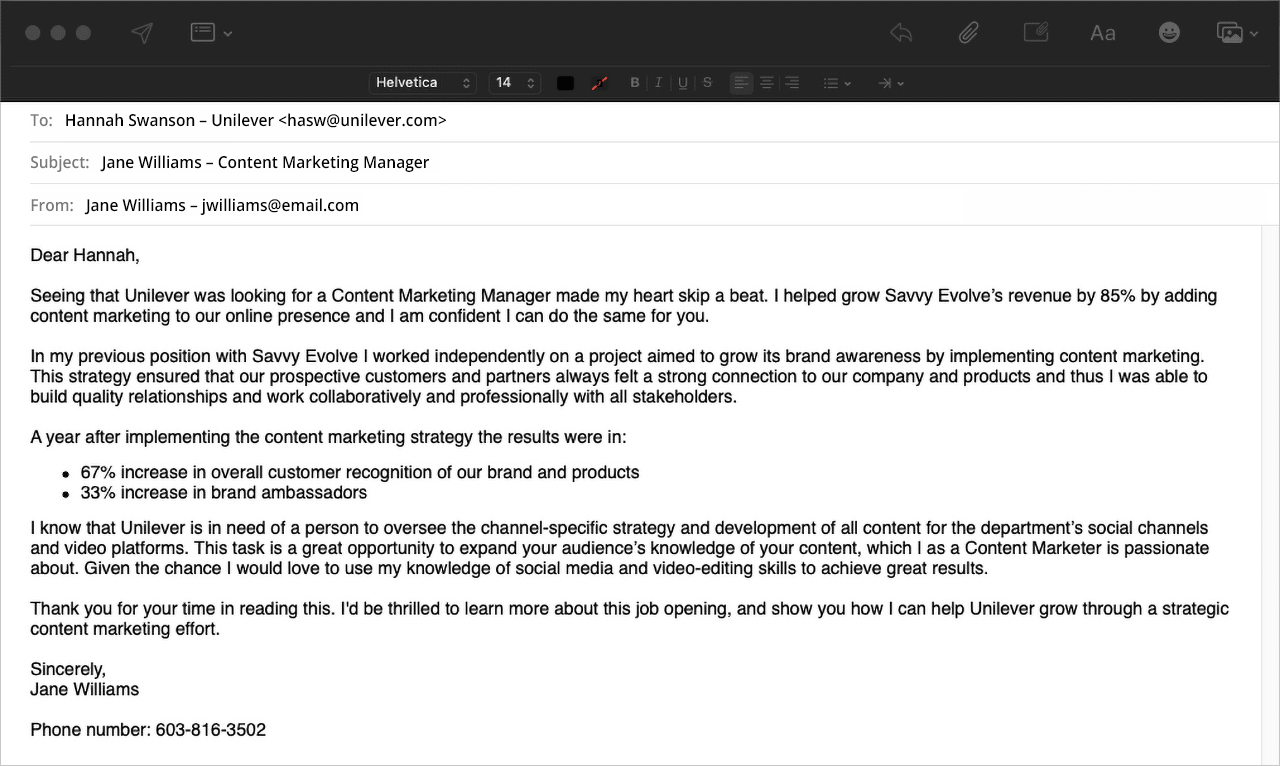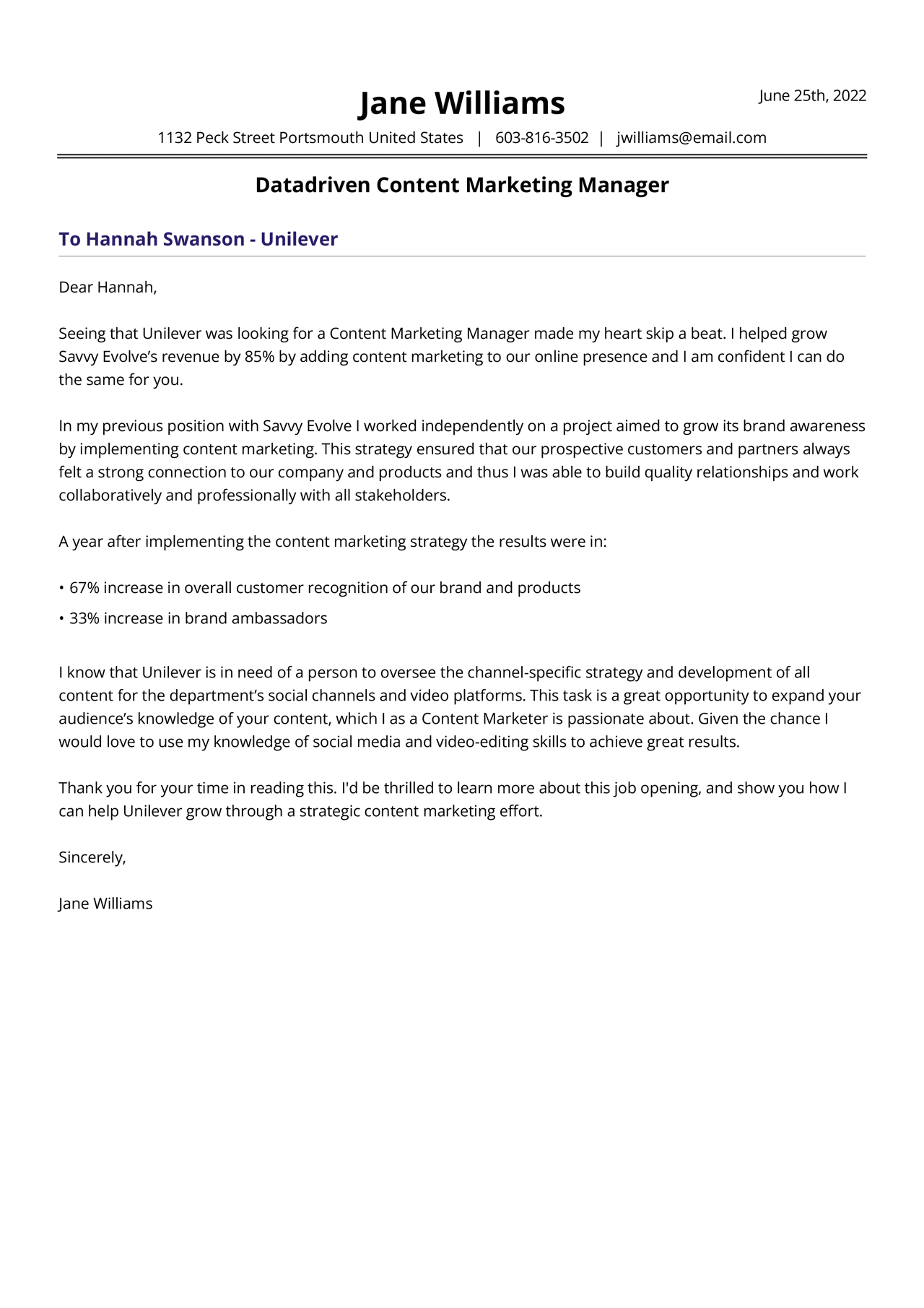How to Format a Cover Letter in 2025 [+Example]
![How to Format a Cover Letter in 2025 [+Example]](https://jofibostorage.blob.core.windows.net/blog/how-to-format-a-cover-letter-header.png)
Hi there! If you’re looking for the best way to structure and format a cover letter plus cover letter examples, you’ve come to the right place. Today we’ll show you:
- What to include in a cover letter
- How to format a cover letter
- Cover letter examples
What to include in a cover letter
Basically, a cover letter consists of five parts:
- A cover letter header
- Salutation and “the hook”
- Your motivation and offer
- Call to action
- Sign off

This means that the formatting of a cover letter is simple. You just follow the steps above. The content is a whole different matter. Luckily, we’ve written an entire blog post about how to write a cover letter plus a guide on how to use ChatGPT for your cover letters.
But let’s look a little closer at the different elements of a cover letter. A cover letter is a formal type of communication - it’s a so-called business letter. As such there are certain business letter formatting you always need to include in your cover letter. The first part is the cover letter header.
1. Cover letter header
The main purpose of your cover letter header is to provide the hiring manager with your contact information. Therefore, you should add this information:
- Your full name and title
- Your physical address
- Your phone number
- Your (professional) email address
Next, add today’s date, the name of the hiring manager and the company you’re applying for a position in.
In our cover letter templates it’s only a matter of filling out the fields. Here is how it looks in our cover letter builder:

2. Salutation and “the hook”
Next up is the salutation you use for initiating your cover letter and the hook you’ll use to get him or her - well - hooked. Remember, you only get one chance at making a great impression here, so make it count.
If you know the first name of the hiring manager, use it! Write “Dear Holly” or “Dear James”. Using a person’s first name grabs their attention and creates a personal vibe.
Now to “the hook”. What is that? If the personal salutation from before is what will grab the attention of the hiring manager, the hook is what will keep it. The hook is the first paragraph of your cover letter which ideally showcases your most relevant career win.
For example:
“Seeing that Unilever was looking for a Content Marketing Manager made my heart skip a beat. I helped grow Savvy Evolve’s revenue by 85% by adding content marketing to our online presence and I am confident I can do the same for you.”
Your hook can be based on other things than one of your achievements. It can also be based on one of the following:
- A fact you love about the company
- A reference within the company to name-drop
- A relevant fact that shows your passion about the position
3. Your motivation and offer
The third part of your cover letter is also the most central one. This is where the real juicy content is. Your focus here should lie in what you can offer the company. Not the other way around. You’ll want to make them feel special.
How to format a basic job cover letter:
- Read the job ad carefully
- Highlight anywhere it mentions the challenges the company is facing
- Explain and exemplify how you are able to solve their challenges - use their own words and phrases as power words
- Use bullet points to break up your text so that it’s less text heavy
- Highlight your achievements by adding your results - numbers will speak for themselves
- Explain your motivation - why do you want to work for them?
This paragraph is by far the most difficult one. This is more or less the same exercise as when you create your resume and your LinkedIn summary.
If you want a take on an alternative to a cover letter, check out our How To Write a Pain Letter guide. We’ve also written an extensive guide with lots of great cover letter examples ready to take inspiration from.
4. Call to action
You’re still with me? Awesome! The next part is the closing paragraph - also called the call to action. This is where you thank the hiring manager for their time and finish your cover letter strong.
Make sure you include the following:
- Thank the hiring manager for their time and consideration of your application
- A compelling call to action where you prompt the hiring manager to invite you in for an job interview
- Brief reiteration of what makes you the ideal candidate for the position
For example check out this close from an enthusiastic yet professional candidate:
“Thank you for your time in reading this. I'd be thrilled to learn more about this job opening, and show you how I can help Unilever grow through a strategic content marketing effort.”
5. Sign off
Lastly, you need a proper and professional way to sign off. We recommend using one of the following:
- Best regards
- Best
- Sincerely
- Yours respectfully
- Cordially
And finish with your full name.
Congratulations! You have now created a perfect cover letter format. Next up we’ll show you the aesthetics of a cover letter - how to format a cover letter.
How to format a cover letter
Below are our recommendations on how to format a cover letter. We’re going to finish the whole thing off with some great cover letter examples.
Font style
Go for a classic font like Arial, Calibri or Cambria. Use a sans serif font to increase your chances of getting past the Applicant Tracking Systems.
Font size
When it comes to the size of your font, you’ll want to go for the middle - not too big and not too small. Stick to between 12 and 10 points depending on your font type. Too large a font and you’ll seem unprofessional. Too small and you risk causing the hiring manager to strain their eyes (and lose their attention).
Margins
Keep your margins at about 1.5”. This ensures plenty of white space and makes your cover letter nice and clean. You’ll definitely want to avoid having a “crowded” look to your cover letter.
Alignment
Keep a nice and orderly left alignment in your cover letter. It is pleasing to the eye.
Length
Don’t exceed one page. Usually a cover letter length will be between a half and a full page - approximately 250-400 words.
File format
If you, like 99% of all applicants, are sending out your job applications electronically, we recommend you send your cover letter as a pdf file. Why? Because a pdf file cannot be altered, it’s compatible, and it’s ATS friendly. Remember to name your cover letter pdf appropriately like for instance Your-Name-Cover-Letter.pdf.
Email cover letter sample
Speaking of sending out your cover letter electronically; it is getting more and more custom to write your cover letter directly into the email you’re sending and not as an attachment such as a pdf file.
The cover letter format for an email should follow this:
- Subject line
- Salutation
- Your motivation and offer
- Call to action
- Sign off
- Your contact information
The subject line for your email cover letter should include your name and the position you’re applying for. In this format there is no need to add the hiring manager’s contact information or the date.
Here’s how an email cover letter would look like:

As you can see there are a lot of similarities between a regular attached cover letter and an email cover letter. Once you’re satisfied with your email - and you’ve made sure that there are no typos - all you have to do is click “send” and it’s off.
Cover letter examples
Check out the structure and formatting on this finished cover letter example to get an idea of how it should look like:

For more cover letter examples, check out our blog.


![Teacher Resume Example & Guide [tips and tricks]](https://jofibostorage.blob.core.windows.net/blog/Teacher-resume-article-small.jpg)
